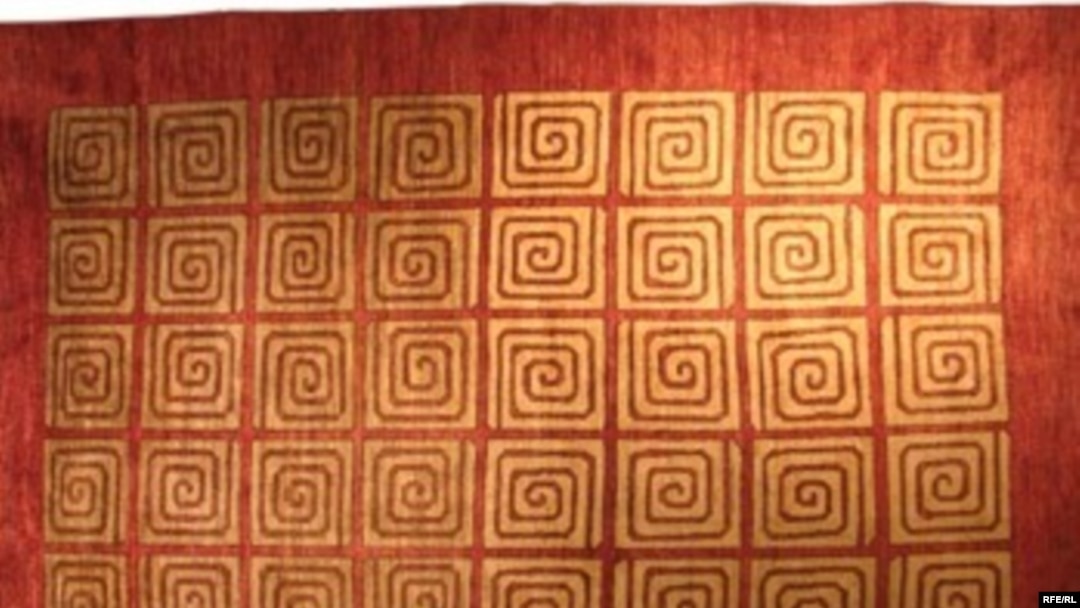Their country has seen a Soviet invasion, followed by civil wars, a total breakdown in central authority, and the harsh rule of the Taliban, prompting millions of people to flee to neighboring states. The hardships uprooted the carpet industry and almost every other business in the process.
But since the overthrow of the Taliban in 2001, huge numbers of refugees have gone home, including many weavers. As they have returned, they have been able to start small businesses of their own after decades of work in obscurity abroad.
One of those returnees is Hajji Nabbi, owner of Zinnat Carpet Merchandise. An ethnic Hazara, Nabbi worked for years as a weaver in refugee camps in Pakistan with little reward. The carpets that he and other Afghans wove were labeled "Made in Pakistan," and most of the profits were taken by Pakistani middlemen who controlled access to the export markets.
But today, based in Kabul, Nabbi is among a growing number of successful merchants who are reviving the Afghan carpet trade. Employing dozens of other Hazara weavers in the capital plus Pashtun weavers in Jalalabad, his company is a rare example of a business operating on at least a partly national scale in a country still struggling for stability.
This year at Domotex, the carpeting world's premiere Western event, Nabbi's company got the international recognition for which Afghan weavers are striving.
The jury awarded Zinnat first prize for Best Modern Design in the under-100-euros-per-square-meter price range. The winning rug, dubbed "Bamiyan" style, is the first "Made in Afghanistan" carpet to reach one of the interior-design industry's center stages for many, many years.
Nabbi describes his winning sample as "a new or modern design, conceived by our skilled designers." Wool from Ghazni Province and natural dyes are used to make the carpet, he says, adding, "It took our weavers in Kabul three months to make this carpet, which now has brought pride to us and to all of Afghanistan."
The contemporary pattern attracts particular attention because so far Afghan weavers have previously tried to appeal to the export market by modifying traditional designs. Afghan weavers -- especially ethnic Turkmen and Hazara -- have had special success in recent years with a modified Indo-Persian design known as the "Chobi," as well as with variations of Caucasus rug designs known as "Kazaks."
Those rugs were much in evidence among the Afghan stalls at Domotex this year, but so were increasingly contemporary looks that show a growing sophistication in anticipating Western design trends.
The handmade-carpet industry is highly competitive and, like most industries, there are international competitions that contribute to a pecking order that includes the most innovative players in the game.
Afghan producers filled much of one of the huge hangers at the Domotex fair in Hannover, Germany, on January 12-15, with 14 stands and one large tent. In a sign of the importance of the rug business to the Afghan economy, the U.S. Agency for International Development (USAID) supported the participation of 28 Afghan carpet traders and producers in the fair.
For the first time, many Afghan women were also present among their country's purveyors.
The head of the Afghan Businesswomen's Federation, Khadija, says that coming to Europe has taught the women a lot about what European consumers want. "Our silk, 'Chobi-,' and 'Kazak'-design carpets attracted a lot of attention, but this was the first time that Afghan women have come to this kind of exhibition, and we had no idea about the demands for carpets in Europe so we brought our old and traditional designs." Khadija says. "Now that we have learned more about what designs are attractive for Westerners, we will try to bring such kinds of designs next year -- so we can attract more dealers and buyers."
In all, Afghan producers say they brought 4,000 square meters of carpets to Domotex, all of which had been sold by the end of the fair.


